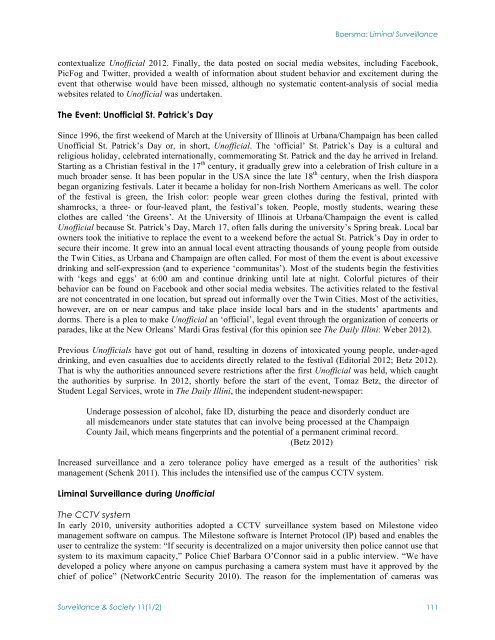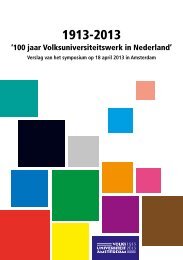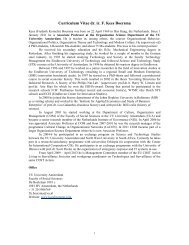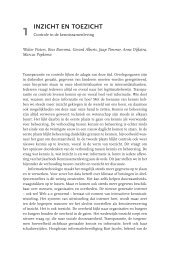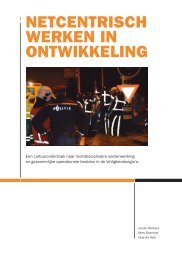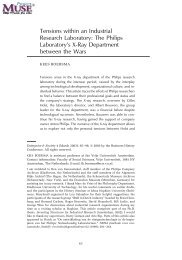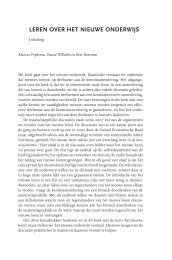Surveillance and Society - Kees Boersma
Surveillance and Society - Kees Boersma
Surveillance and Society - Kees Boersma
You also want an ePaper? Increase the reach of your titles
YUMPU automatically turns print PDFs into web optimized ePapers that Google loves.
<strong>Boersma</strong>: Liminal <strong>Surveillance</strong>contextualize Unofficial 2012. Finally, the data posted on social media websites, including Facebook,PicFog <strong>and</strong> Twitter, provided a wealth of information about student behavior <strong>and</strong> excitement during theevent that otherwise would have been missed, although no systematic content-analysis of social mediawebsites related to Unofficial was undertaken.The Event: Unofficial St. Patrick’s DaySince 1996, the first weekend of March at the University of Illinois at Urbana/Champaign has been calledUnofficial St. Patrick’s Day or, in short, Unofficial. The ‘official’ St. Patrick’s Day is a cultural <strong>and</strong>religious holiday, celebrated internationally, commemorating St. Patrick <strong>and</strong> the day he arrived in Irel<strong>and</strong>.Starting as a Christian festival in the 17 th century, it gradually grew into a celebration of Irish culture in amuch broader sense. It has been popular in the USA since the late 18 th century, when the Irish diasporabegan organizing festivals. Later it became a holiday for non-Irish Northern Americans as well. The colorof the festival is green, the Irish color: people wear green clothes during the festival, printed withshamrocks, a three- or four-leaved plant, the festival’s token. People, mostly students, wearing theseclothes are called ‘the Greens’. At the University of Illinois at Urbana/Champaign the event is calledUnofficial because St. Patrick’s Day, March 17, often falls during the university’s Spring break. Local barowners took the initiative to replace the event to a weekend before the actual St. Patrick’s Day in order tosecure their income. It grew into an annual local event attracting thous<strong>and</strong>s of young people from outsidethe Twin Cities, as Urbana <strong>and</strong> Champaign are often called. For most of them the event is about excessivedrinking <strong>and</strong> self-expression (<strong>and</strong> to experience ‘communitas’). Most of the students begin the festivitieswith ‘kegs <strong>and</strong> eggs’ at 6:00 am <strong>and</strong> continue drinking until late at night. Colorful pictures of theirbehavior can be found on Facebook <strong>and</strong> other social media websites. The activities related to the festivalare not concentrated in one location, but spread out informally over the Twin Cities. Most of the activities,however, are on or near campus <strong>and</strong> take place inside local bars <strong>and</strong> in the students’ apartments <strong>and</strong>dorms. There is a plea to make Unofficial an ‘official’, legal event through the organization of concerts orparades, like at the New Orleans’ Mardi Gras festival (for this opinion see The Daily Illini: Weber 2012).Previous Unofficials have got out of h<strong>and</strong>, resulting in dozens of intoxicated young people, under-ageddrinking, <strong>and</strong> even casualties due to accidents directly related to the festival (Editorial 2012; Betz 2012).That is why the authorities announced severe restrictions after the first Unofficial was held, which caughtthe authorities by surprise. In 2012, shortly before the start of the event, Tomaz Betz, the director ofStudent Legal Services, wrote in The Daily Illini, the independent student-newspaper:Underage possession of alcohol, fake ID, disturbing the peace <strong>and</strong> disorderly conduct areall misdemeanors under state statutes that can involve being processed at the ChampaignCounty Jail, which means fingerprints <strong>and</strong> the potential of a permanent criminal record.(Betz 2012)Increased surveillance <strong>and</strong> a zero tolerance policy have emerged as a result of the authorities’ riskmanagement (Schenk 2011). This includes the intensified use of the campus CCTV system.Liminal <strong>Surveillance</strong> during UnofficialThe CCTV systemIn early 2010, university authorities adopted a CCTV surveillance system based on Milestone videomanagement software on campus. The Milestone software is Internet Protocol (IP) based <strong>and</strong> enables theuser to centralize the system: “If security is decentralized on a major university then police cannot use thatsystem to its maximum capacity,” Police Chief Barbara O’Connor said in a public interview. “We havedeveloped a policy where anyone on campus purchasing a camera system must have it approved by thechief of police” (NetworkCentric Security 2010). The reason for the implementation of cameras was<strong>Surveillance</strong> & <strong>Society</strong> 11(1/2) 111


